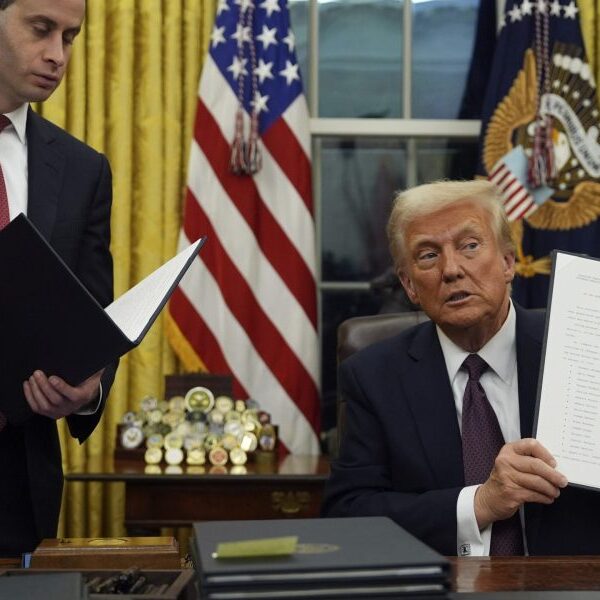
The global financial system, or what we broadly refer to as TradFi (Traditional Finance), is a $30+ trillion behemoth. Its reach spans commercial banking, global banking assets, insurance, capital markets, wealth management, and asset servicing. It touches every person, business, and institution, underpinning how value flows through the world.
Meanwhile, DeFi (Decentralized Finance), despite being the most transformational innovation to hit financial services in decades, remains a mere rounding error in that picture. Depending on how you measure it, via Total Value Locked (TVL), DeFi token market cap, protocol revenue, or institutional activity, DeFi’s footprint barely scratches $150 billion on a good day. That’s less than half a percent of TradFi’s scope.
This is not a failure. It is a testament to just how early we are. Seen more optimistically, it is an opening that holds the blueprint for the future of finance.
Already, we’ve seen DeFi recreate core banking functions entirely on-chain, including borrowing, lending, insurance, trading, asset management, and structured products. And it’s working. Millions of users, thousands of developers, and hundreds of projects are coalescing around this future.
DeFi’s growth, however, has been largely inward-looking, driven by crypto-native users rather than institutional money. And despite DeFi’s rapid-fire innovation, leading TradFi figures have mostly elected to watch from the sidelines, or worse, confine themselves to dismissive skepticism.
This underscores the need for a bridge between the old and the new. TradFi must integrate with DeFi, not just observe it. Not to co-opt it, but to scale it. Fortunately, there is a precedent for such integration.
Consider BlackRock’s game-changing embrace of Bitcoin ETFs in 2023–2024 (and later ETH). It didn’t just lend legitimacy, it unlocked institutional access at scale. Today, BlackRock has become the single largest TradFi driver of crypto adoption. It manages over $87 billion in spot Bitcoin ETF assets and $10 billion in ETH ETFs.
BlackRock is also leading in DeFi-adjacent areas. Its BUIDL fund, a tokenized U.S. Treasury fund issued mostly on Ethereum via Securitize, holds over $2.4 billion, almost 10% of the $25 billion tokenized asset market on-chain. It’s a direct example of TradFi using DeFi infrastructure without compromising regulatory standards.
Meanwhile, JP Morgan’s Kinexys division is working to bring financial assets on-chain. It has tested on-chain FX, repo, and tokenized bonds using permissioned DeFi liquidity pools. It is building infrastructure that mimics DeFi mechanics while staying within institutional compliance rails. This isn’t a crypto experiment; it’s the beginning of institutional DeFi.
Then there is Fidelity, long known for its crypto-forward stance, which is quietly expanding its digital assets platform and exploring staking, custody, and tokenized financial products. It has the trust of pension funds and family offices—the very cohort most likely to embrace DeFi once it’s wrapped in a familiar product interface. Fidelity could lead by building regulated DeFi index products or permissioned vaults for clients.
Goldman Sachs and BNY Mellon are also making moves with pilot projects to tokenize money market funds, with fast settlement and interoperability across digital networks. Goldman’s private blockchain and BNY’s LiquidityDirect are testing tokenized fund redemptions, a gateway to replicating DeFi yield mechanics inside TradFi.
UBS, Citi, HSBC, and Standard Chartered have participated in tokenized bond issuances, on-chain settlement pilots, and custody infrastructure projects. These banks are particularly well-positioned to onboard emerging-market clients and sovereign wealth with DeFi-wrapped TradFi products.
Not every TradFi sector, though, is equally ripe for a shift to DeFi. The two verticals where adoption is most likely to break through are the Asset Management and Treasury Markets, as well as the Securities Lending and Repo Markets.
Tokenized treasuries, like BlackRock’s BUIDL, are just the beginning. Expect asset managers to create programmable yield products, combining DeFi vault strategies with real-world assets (RWAs). This is attractive for institutions sitting on large cash balances, because DeFi-native strategies offer higher yields and transparent collateralization.
On the Lending and Repo side, DeFi can enable instant, auditable, and programmable collateral exchanges with reduced counterparty risk. JPMorgan’s experiments in tokenized repo trading are just the start. A permissioned version of Aave or Morpho could gain traction here.
Just as crypto exchanges wrapped peer-to-peer transactions in slick UX, TradFi needs to wrap DeFi in user-friendly and compliant interfaces.
That’s the blueprint for TradFi and DeFi collaboration. TradFi doesn’t need to reinvent the wheel. But it can add polish, regulatory clarity, and scale to existing DeFi primitives. Custodians can integrate liquid staking. Banks can offer tokenized money market funds on-chain. Asset managers can issue yield-bearing DeFi vaults with KYC wrappers.
All of the ingredients are in place. For now, TradFi has the balance sheets and DeFi has the blueprints. The future belongs to those who build the bridge.















